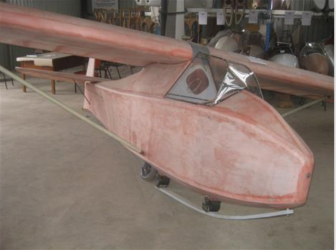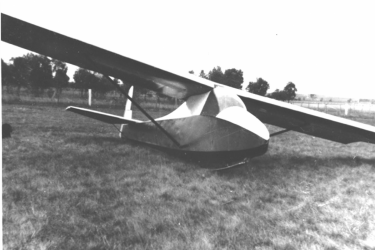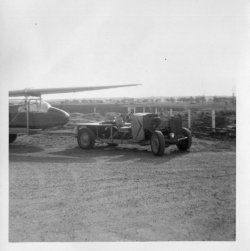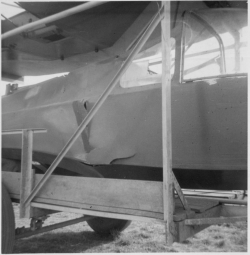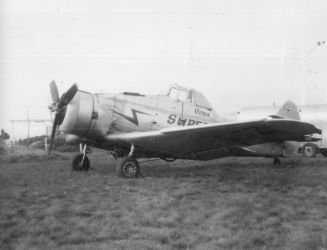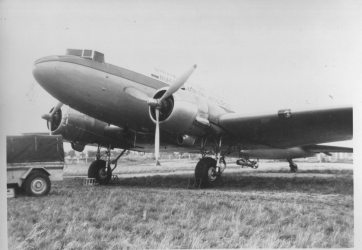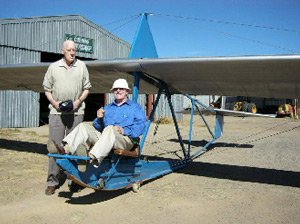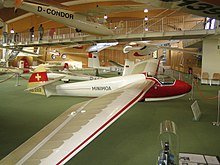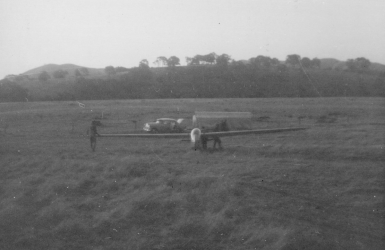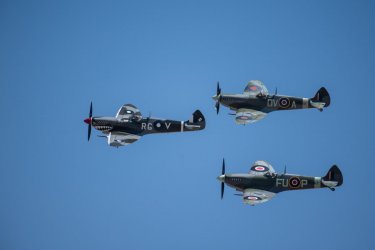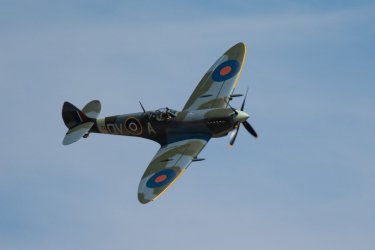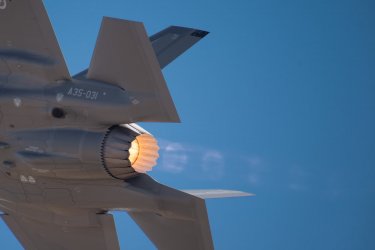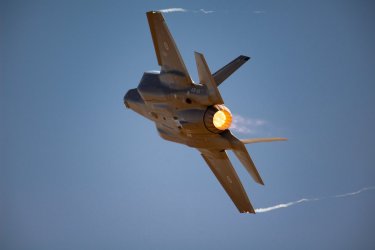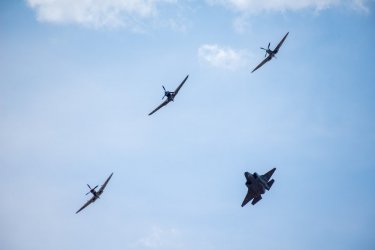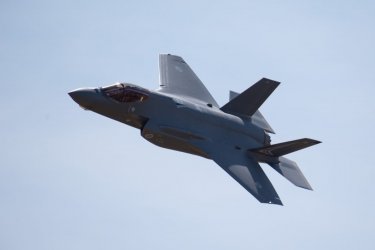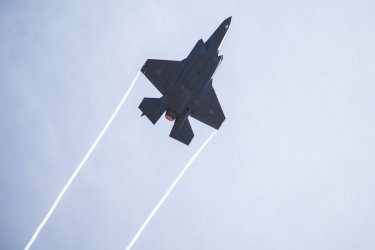Here is our trainer, an ES52b (shortwing) Kookaburra.
The wing was in one piece , it required at lot of helpers to de rig and was impractical for Cross Country work.
It is being towed by our vip vehicle, a very well cared for 1936 Chrysler side valve straight 6 with a half tonne concrete block in its rear.
Aero tows were almost unknown, the fledgling club had no winch and the Chrysler , which was my weekend office for many years did sterling service as a launch towmaster. I thrashed the thing without mercy but perfected a launch style that was later copied by other auto towing clubs.
Ahh the
Kookaburra. A classic two seater trainer, and early solo aircraft. The training regime at Benalla was ab-initio training and then solo in the Kookaburra, and another 20 hours before progressing to a single seater, which in those days was the ES52 Arrow. It was a bugger to rig, as there were four lugs on the wing, that had to be aligned with four slots in the top of the fuselage, and then you had to slide two steel rods through the width of the fuselage, to pick up the lugs, out the other side and then get secured with clips. It never worked first time, and you had very little view of where the rod was going, while of course there were at least two people on each wingtip complaining about how long it was taking - and with their own ideas of "up a bit, back a bit..." etc.
It was a staggered two seater, meaning the instructor sat alongside and behind you - the instructor's knees were in line with your seat. I always liked instructing side by side, although by the time I became an instructor, we used the
IS 28, which were tandem seating. But, as you were tucked in under the leading edge of the wing, visibility for the instructor was poor. And the seats were uncomfortable. Although one pilot had done her 5 hour flight for her Silver C, which was a massive feat of endurance. You sat on the left hand side, which meant you had to allow for parallax.
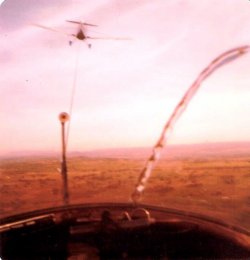 On tow out of Benalla, in low tow position. And yes, I am skidding to the left as I was taking the photo one handed. The 'worm' on the right hand side of the canopy is a glue repair to the canopy.
On tow out of Benalla, in low tow position. And yes, I am skidding to the left as I was taking the photo one handed. The 'worm' on the right hand side of the canopy is a glue repair to the canopy.
Australia was fortunate that in 1950 they invited Edmund Schneider to move to Australia from Germany and take up designing and building gliders. The early
Grunau Baby, and then his build of the l
egendary Ka6, and then the Kookaburra, meant the Australian market had access to world class aircraft. Although, with the advances in materials and technology, the fibreglass gliders from Europe overtook what was built locally. There are still a lot of the original aircraft in service -
ES-52 Kookaburra,
Although by the mid 70's I had the luxury of aerotow behind a variety of aircraft. At Benalla, there was the Auster (best avoided on hot days, as it was so slow on the climb), and two types of Pawnees - a two seater 180hp, and a single seater 150hp.
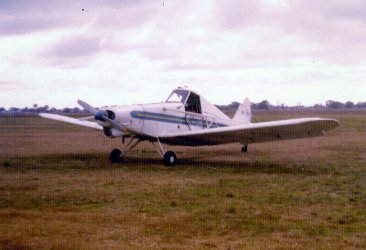 Two Seater Pawnee
Two Seater Pawnee
In later years the Club got rid of the Auster and purchased another 235hp Pawnee. The difference was amazing. My first tow behind the 235hp Pawnee was in an
ES59 Arrow, which is a very light single seater at 280kg all up. Instead of the slow build up, running along the ground waiting to lift off and wait for the tug to become airborne, I was almost launched straight off the ground and had to recover and get the glider back down level and close to the ground for the take off run.
After moving from the Kookaburra into the single seaters, you got very used to the lighter controls. However, every three months all pilots had to do a check ride with an instructor, in the Kookaburra. It was like flying a brick - hence the name Bricka-burra. While the glide ratio was 1 in 20 in theory, it was closer to 1 in 15. In later years, when the Club got rid of the Kookaburras some members felt so nostalgic about them they bought one and put it on the flight line. It actually was in my mind a dangerous move, as we had pilots trained on the newer, higher performing two seaters, who then went onto a series of single seaters. The Kookaburra was so different to what they had experienced, especially with the higher sink rates and heavy controls, we had a few hard landings and people getting a bit close to comfort in getting back to the airstrip. Finally, the lone Kookaburra was retired.
 victoriancollections.net.au
Here it is fitted with a canopy but it was open when I flew it.
victoriancollections.net.au
Here it is fitted with a canopy but it was open when I flew it.